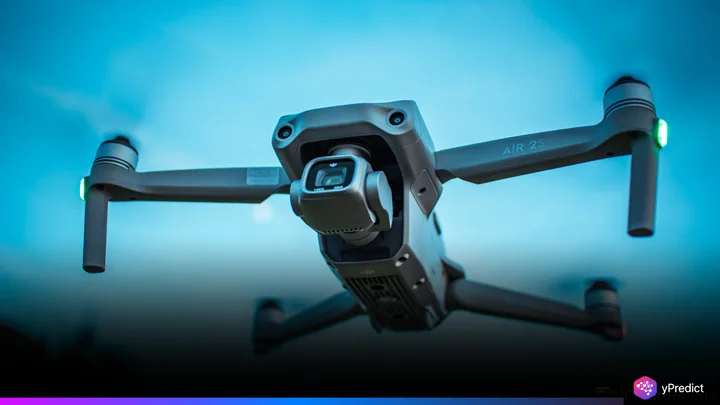
The global market for artificial intelligence (AI) in drones is picking up speed. A new report from Stratview Research projects the AI Drone Industry to grow from US$12.8 billion in 2024 to a staggering US$55 billion by 2032. With a compound annual growth rate of 19.4%, this rapid climb reflects growing demand across defense, logistics, and surveillance. Companies like DJI, Intel, and NVIDIA are shaping this transformation, betting on smarter, faster, and more autonomous flying systems.
Much of this growth is anchored in Asia-Pacific, where manufacturers and government initiatives are driving adoption. “AI is redefining how drones work, making them smarter, quicker, and safer,” the report says. From battlefield surveillance to delivering parcels, the drone’s job description is rapidly changing. And the real shift? It’s happening in real time.
Cloud Systems and Smarter Eyes in the Sky Fuel Growth?
At the heart of this growth is a new class of drones, those powered by AI and cloud connectivity. These drones can process data mid-flight, avoid obstacles, and make autonomous decisions. Leading the tech charge are cloud-based drones, which allow for real-time operations and are increasingly used in urban safety, agriculture, and military zones.
Stratview’s report points to growing use cases in logistics and defense. In New York, police use AI drones to monitor events and emergencies. In Ukraine, cloud-linked drones assist military surveillance. “They’re no longer just flying cameras,” the report explains. “They’re mobile data hubs with built-in decision power.”
AI chips and lightweight materials are also transforming drone hardware. Components like the GAP9 Shield now enable even nano-drones to fly longer and perform smarter tasks. Hardware remains the largest product segment, as it enables all other capabilities. Software and services follow closely but rely on these tech innovations to deliver value.
Efficiency Gains Come with Security and Ethical Trade-offs
The results of this AI shift are already visible. In logistics, AI drones are reducing delivery time and cost, particularly for last-mile shipping. They map routes, sort parcels, and navigate autonomously. In military zones, they’re scouting dangerous areas and alerting soldiers to threats, without putting humans at risk.
Yet, the rise of AI in drones is not without friction. Privacy advocates warn of overreach, especially as drones take on surveillance roles in public spaces. In cities, concerns grow about facial recognition and continuous monitoring. Some governments have yet to clarify where and how AI drones can be used.
Meanwhile, industries still face integration challenges. Building trust, navigating airspace rules, and training users are ongoing hurdles. “There’s momentum,” Stratview notes, “but scaling these solutions takes more than good tech.” Companies are now investing in AI training, data security, and regulatory partnerships to bridge this gap.
AI Drone Industry Signals a Shift in Global Tech Priorities
As AI becomes the brain behind more drone fleets, the implications extend beyond delivery or defense. Stratview’s forecast shows a growing tech race, one where Asia-Pacific leads not only in manufacturing but also in AI innovation. With strong R&D ecosystems and companies like DJI at the center, the region is shaping future AI drone norms.
The report sees cumulative sales of over US$270 billion between 2025 and 2032. But beyond numbers, it’s about who sets the pace for automation, safety, and air mobility. With public safety, agriculture, and defense all evolving rapidly, the drone is no longer just a flying gadget; it’s a frontline tool.






